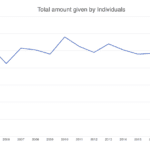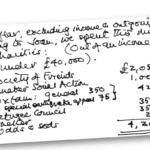Time to change tactics – the view from Australia
Last year, I spoke at the Australasian Fundraising Forum in Sydney. I shared my thoughts on the fundraising crisis in the UK and how we ended up in such a mess. I also looked at what was happening in Australia and found a number of similarities to our situation in the UK. I voiced my concern that they could well be repeating our mistakes.
That’s why I was interested to read an article by Lawrence Jackson in Philanthropy and Fundraising magazine, highlighting his concerns regarding Australian fundraising practice. Lawrence is not new to fundraising. He established the consultancy, Catalyst Management and has 16 years experience of running fundraising campaigns. His suggestions to avert any crisis are spot on, so I thought worth sharing to a wider audience. Here is his article in full…
Is it Time to Change Tactics?
The late Madison Avenue advertising guru David Ogilvy once said: “The consumer isn’t a moron. She is your wife”. You could say something similar about the relationship of charities to donors… which leads me to wonder – observing current fundraising practices – if Australia’s charity sector is showing donors the respect they are due?
The cost of competition
In our drive for a share of donors’ wallets – pressured by sector competition and unpredictable financial markets – charities have been enticing donations with free gifts and trinkets, seeking ever-higher responses. We swap donors’ private data to reach those with the highest propensity to give.
Once they’re on board, we send thank-you ‘donor care’ mailings. But we can’t help including a ‘soft donation ask’, as many donors respond generously to any charity letter. Our raffle and lottery programs boast prizes from cash to electronic goods and tantalising holidays, even palatial homes, in exchange for people’s support.
However, look closely and you’ll see cracks beginning to show. Anecdotal evidence is emerging of society’s negative reactions to some of these now commonplace practices.
Some observations from my time as a fundraising consultant and practitioner include:
• High levels of return mail from direct mail appeals, sometimes up to 7-10% often sent directly back to mail houses, because volumes are too large for charities to process internally.
• Very low response rates and average gift levels for premium-based direct mail appeals, highlighted by some of the lowest second-gift rates in years.
• Declining year-on-year donor retention rates, leading to stagnant donor programs from prominent and highly trusted charity brands.
• Irate letters and Facebook messages from donors complaining about activities they see as aggressive and wasteful.
If anyone has any doubts about whether this is a concern, you only need to look at the media storm and industry meltdown that has engulfed the UK’s charity sector – the response to the perception of unethical practices following a loyal elderly donor’s suicide, who according to The Guardian, was linked to her being on the mailing list of approximately 100 charities who in turn may have sent her almost 3,000 direct mail appeals for support in a single year. On the flipside is Canada, where the rising #donorlove movement is aiming to enhance donor retention and satisfaction.
It is unlikely Australia will be immune to such developments. Witness Nicky Gemmel’s recent piercing column entitled “Charities and the donation industry: sailing into dangerous waters” in the Weekend Australian. This reluctantly outlines her concerns about both UK and Australian fundraising practices, her views of industry blind spots, and her fears of the storm she guesses is ahead.
Welcome to the arms race
As a long-standing practitioner myself, I fully appreciate that donations are essential for charities to serve needy beneficiaries. And securing them is getting harder. There are around 700,000 nonprofit organisations in Australia today, including over 60,000 registered charities and approximately 25,000 Deductible Gift Recipient-endorsed organisations.
But it seems to me that competition may have set off a fundraising arms race, blindly embraced by the whole sector without sufficient consideration, scrutiny and analysis.
“If you don’t ask, you don’t get” – right? Perhaps. But my sense is it’s time to find the balance between asking and appreciating – in a way that acknowledges people’s authentic motivation for giving and ensures Australians’ and donors’ trust in charities goes unharmed. After all, that trust is what every charity relies on to survive.
Admittedly, it’s a difficult balance to achieve. But my fear is that otherwise – through overuse and mainstreaming of techniques primarily oriented to increase donations and response – we may be sending the wrong messages to donors.
Wrong, because the act of giving in itself should be a joyful and rewarding experience. This is what truly motivates people’s generosity – and it’s the ethos behind the help charities offer beneficiaries. As such it’s the common philosophy that bonds charities and donors.
Do supporters really need to be bribed and cajoled to induce their patronage? How long before these practices can’t be sustained in their existing form?
In my view, given the signs of donor angst I’ve mentioned, the fundraising industry now requires solid resolve and courage to dispassionately assess the impact over time of some of our practices. It seems clear that a recalibration is warranted if we are to achieve and maintain more authentic levels of donor engagement.
I suggest we attempt this as follows:
• Revert to tactics which tap into donors’ authentic motivation for giving.
• Honour the personal fulfilment donors feel in contributing to and helping others.
• Overcome the temptation and fixation for the short-term donation sugar hit – and rather focus on the far more critical long-term metrics of lifetime value. That is, net income produced from fundraising campaigns over at least a 5 to 7 year donor loyalty period.
• Develop capability to accurately measure critical loyalty milestones over the donor journey: Namely first-year attrition, year-on-year retention and annual gift increase levels.
• Factor in the full impact of techniques and tactics employed such as costly premiums, swapping of donor data and cooperative schemes, and precisely determine the long-term net outcome of these.
• Consider the impact of our activities on the current and future levels of public trust in charitable organisations.
• Keep determining ways to proactively self-regulate, and communicate fundraising practices likely to be well-regarded by donors.
Or else, what mixed messages are we sending donors about our expectations – and what it means to give? If we aren’t mindful, could we be changing the donor ecosystem forever? I hate to imagine what David Ogilvy would think.
Lawrence can be contacted at ljackson[at}catalystmanagement.com.au









